Diptera.info :: Identification queries :: Diptera (adults)
Who is here? 1 guest(s)
|
Muscidae (Lispocephala alma)
|
|
| ebbek |
Posted on 02-02-2014 19:10
|
|
Member Location: SW Sweden, Halland Posts: 1422 Joined: 23.06.08 |
From SW Sweden, found om the snow today, which was our first day with a feeling of spring. About 6 mm. Is it possible to say genere or species? Krister ebbek attached the following image:  [198.79Kb] Edited by ebbek on 07-02-2014 17:15 |
|
|
|
| ebbek |
Posted on 02-02-2014 19:11
|
|
Member Location: SW Sweden, Halland Posts: 1422 Joined: 23.06.08 |
Other view
ebbek attached the following image: 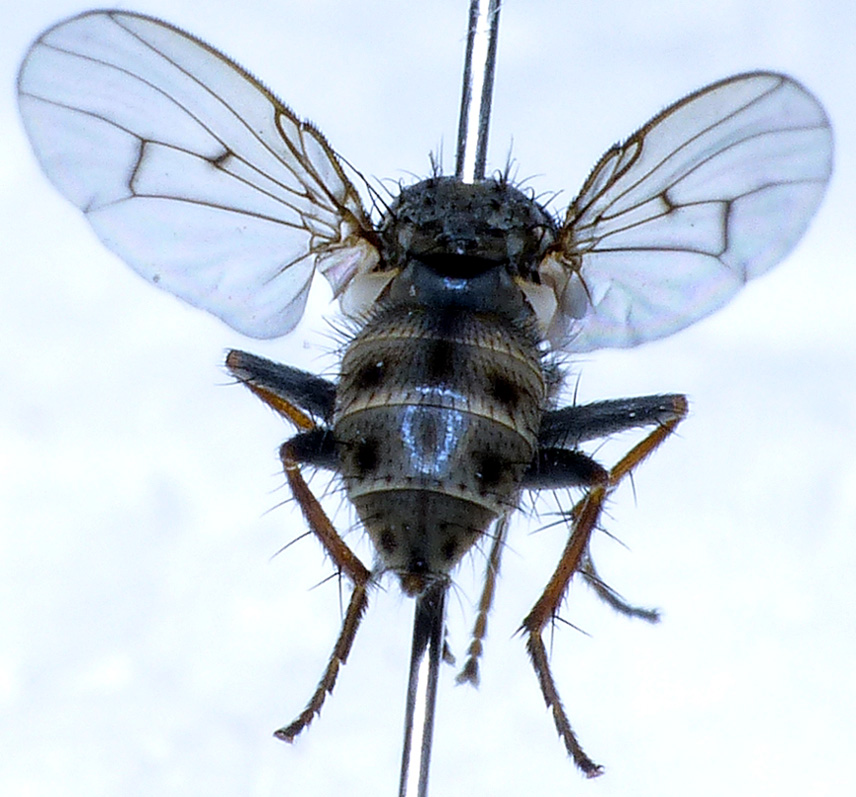 [198.23Kb] Edited by ebbek on 02-02-2014 19:12 |
|
|
|
| oceanlis2000 |
Posted on 06-02-2014 12:47
|
|
Member Location: Wales, UK Posts: 570 Joined: 15.06.10 |
Nice fly To proceed we need more information, to start a photo of the thorax to see the number of pre dc and post dc setae, then a side view of the thorax to see if a pra seta is present, then a close up of the stpl to see how many setae and a close up of the side of the head to see the orbital and frontal setae Dr Elisabeth A. Harris @FloraConsUK |
|
|
|
| ebbek |
Posted on 06-02-2014 16:58
|
|
Member Location: SW Sweden, Halland Posts: 1422 Joined: 23.06.08 |
Hello, happy for your reply I immediately looked for the fly to take some new pictures - but it was in a miserable shape. Some other insect have got a good meal on it and there is not so much left of it (and the head is gone). But I still can see some details: There seems to be 2+3 dc and on the remaining part of stpl there are 3 seta (the two upper ones are stronger than the middle one). But I don´t know what "pra seta" is, where can I find it if it is present? And I have one picture of the head which I earlier didn´t think was good enaugh to upload, but now I try and perhaps you can see som details? Krister ebbek attached the following image: 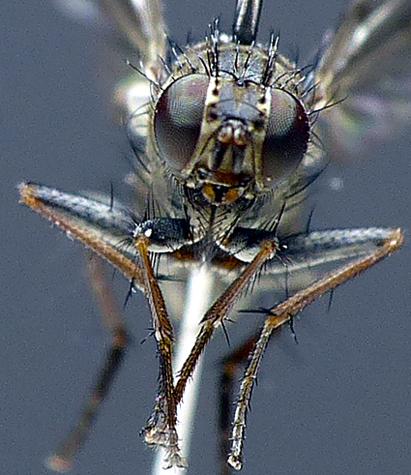 [193.02Kb] |
|
|
|
| Stephane Lebrun |
Posted on 06-02-2014 17:44
|
|
Member Location: Le Havre, France Posts: 8248 Joined: 03.03.07 |
Hi, this is a female Lispocephala indeed, in the alma-group, and it could well be L. alma itself as the abdomen doesn't seem to be yellowish at base. The last tarsomere of foreleg as to be bicolorous int his case. Stephane. |
|
|
|
| ebbek |
Posted on 06-02-2014 18:02
|
|
Member Location: SW Sweden, Halland Posts: 1422 Joined: 23.06.08 |
Many thanks! It seems to be alma. Krister |
|
|
|
| oceanlis2000 |
Posted on 07-02-2014 15:22
|
|
Member Location: Wales, UK Posts: 570 Joined: 15.06.10 |
Hello I'd got it down to 3 species however it's always useful to learn Lispocephala - 2+3 dc, 0 pra seta, 2 reclinate orbital setae, 2 reclinate orbital setae, 3 stpl setae in an inverted isosceles triangle as to species 0 ad on tibia 2, a close up of tibia 3 necessary to discount pallipalpis, scutellum with dark spots in the corners basal region that leaves alma and falculata - female Here's an interesting link - http://www.diptera.info/forum/viewthread.php?forum_id=5&thread_id=43337 A close up of the tarsomeres on leg 1 may have the answer - if the above link is falaculata then I am assuming that tarsomere 5 should be completely dark, is this right Stephane? (the pedicel seems to be pale in both species) Edited by oceanlis2000 on 07-02-2014 15:31 Dr Elisabeth A. Harris @FloraConsUK |
|
|
|
| ebbek |
Posted on 07-02-2014 16:05
|
|
Member Location: SW Sweden, Halland Posts: 1422 Joined: 23.06.08 |
Thanks a lot for interesting info! I will keep this in mind when I find other Lispocephala. This fly is, as mentioned above, destroid by some other insect and the front legs (and head) ar gone. When I now look clooser at my earlier pictures it seems as if the 5:th tarsomer on front leg is completely dark, but it is not easy to see on this uploaded picture. It would have been interesting to know if it really is falculata because this species is not known from Sweden yet. I will try and find a new one! Krister ebbek attached the following image: 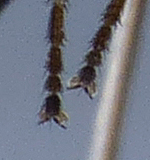 [24.59Kb] |
|
|
|
| oceanlis2000 |
Posted on 07-02-2014 16:59
|
|
Member Location: Wales, UK Posts: 570 Joined: 15.06.10 |
Hi again I've had a look on-line for more info http://www.fugleognatur.dk/gallery_browse.asp?ID=160323&ArtsID=15253&mode=art Lispocephala alma - male (base of tarsomere 5 white) http://www.fugleognatur.dk/gallery.asp?mode=ShowLarge&ID=160496 Lispocephala falculata - male (base of tarsomere 5 pale, same colour as other tarsomeres) We have female falculata (on this site) and alma also appears to have the base of tarsomere 5 the same as tarsomere 4 (perhaps someone can confirm for sure) If so we can discount it as a necessary feature I also found this It's a translation from the above Danish site as you can see the translator is not that good, if so alma is right Hi Ole It is Lispocephala alma (or falculata), she (Muscidae). Last link on the forefoot must be two-tone-mostly dark, but with light base. When the body is uniformly dark, one should be able to exclude, for example, l. falculata, where females have yellow base. L. falculata can fly very early and earlier than alma, but already here in February after prolonged frost must be unusual ... I am not quite sure that the two species females can be distinguished reliably, but I have followed Gregor et al. in the thread here -see the link HERE and certainly the female out from the color of the body. You can do the same. Walther It is a gender issue. At least according to The Muscidae (Diptera) of Central Europe by Gregor et al. (2002). I actually came a little in doubt after I had intended it to alma, if it is so safe to distinguish it from falculata-the female alone on color basalt on abdomen can occur. Gregor et al. makes it quite shown: -Female abdomen dark, not yellow to base ... L. alma -Female abdomen yellow to base ... L. falculata/l. ungulata (L. ungulata are a middelhavsart, so we must not worry about). So we follow key, it is l. alma, and I think we need to do! Walther Dr Elisabeth A. Harris @FloraConsUK |
|
|
|
| ebbek |
Posted on 07-02-2014 17:14
|
|
Member Location: SW Sweden, Halland Posts: 1422 Joined: 23.06.08 |
Thanks again! Your information is a very good help to ID future Lispocephala, which i use to see quite a lot of in our garden in the summer. And I will let this one go for alma so far. Krister |
|
|
|
| oceanlis2000 |
Posted on 10-02-2014 13:18
|
|
Member Location: Wales, UK Posts: 570 Joined: 15.06.10 |
Hi Krister I do hope you find some more Check out http://www.royensoc.co.uk/sites/default/files/Vol10_Part04b.pdf Fig 12, let me know what you think? Dr Elisabeth A. Harris @FloraConsUK |
|
|
|
| ebbek |
Posted on 11-02-2014 13:22
|
|
Member Location: SW Sweden, Halland Posts: 1422 Joined: 23.06.08 |
It seems to be alma this time - but now I know what to look after when there will be more flies in the air as the spring returns. Thanks for good help! Krister |
|
|
|
| Jump to Forum: |









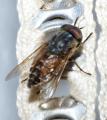
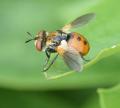


 but don't see the image in the post.
but don't see the image in the post.
